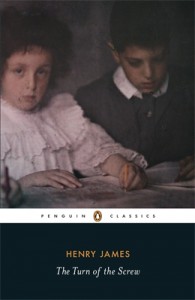books you should have read by now: the turn of the screw
Is this novella the history of a deluded spinster who lusts for a little boy, or is it the tale of a respectable, selfless woman struggling against forces of supernatural evil? The answer is not so simple: The Turn of the Screw by Henry James is famously an irresolvable exercise in ambiguity. It’s a trap, as James put it, for the unwary. Intentionally ambiguous, the text plays on our desire for gothic thrills with suggestions of repressed sexual longings and of corrupted innocence.
First published in 1898, it centres on the highly subjective first person narration of an unnamed woman in her early twenties who, after answering an ad in a newspaper and going to meet a ‘bachelor in the prime of his life’, is hired to take charge of his niece, Flora, and his nephew, Miles.
The two little orphans live in a secluded country house belonging to him, called Bly. The young woman is to be the children’s governess but she is under the strict condition that she shall assume ‘supreme authority’ over her two charges without ever turning to her master for help or contacting him for any reason. The governess is understandably distressed but takes on the position nevertheless.
At Bly, she finds herself confronted by ghostly apparitions, who, she discovers with help from Mrs Grose (the housekeeper) are Miss Jessel and Peter Quint, the former governess and the former valet at Bly. Our narrator becomes convinced that the ghosts have come back to take possession of the children’s souls and that they are reliving their sensual experiences through them.
Her imagination is fueled by stories of illicit sexual liaisons between Quint and Jessel but the sexual hints are too elusive to count as evidence. We don’t even know whether the ghosts are real because no one else sees them apart from the governess; her story is shrouded in ambiguity and paranoia and we are constantly made to question her credibility as a witness.
Edmund Wilson argued in 1934 that the tale is not a ghost story but a madness story, a study of a case of neurosis, paranoia, and hysteria. The ghosts are not real but only exist as figments of the governess’s diseased imagination. They are mere projections of her repressed sexual desires, he wrote. This reading caused waves in the critical scene and it set the tone for nearly all subsequent critical discussion. The governess is either a neurotic deceived by her own fantasies or a sane saviour of the children struggling against evil forces.
Such psychoanalytic readings bring to mind earlier novels such as Jane Eyre and Wuthering Heights that occupied themselves with the psychosexual mysteries of the repressed woman in a number of ways. Today, the tradition of the mad woman in the attic has almost become a literary and cinematic cliché. Women who transgress accepted social boundaries or challenge the strict codes of gender have invariably been diagnosed with hysteria or neurosis.
But this is not the point. James delights in his game. Through a masterfully sustained ambiguity, he doesn’t let us decide whether the ghosts are real or whether the governess is a victim of her own morbid psychology.
Instead, as critic Shoshana Felman has argued, the text turns readers into the governess by making them suspicious of the sexual secrets of the children. The unskilled and naïve reader is made to entertain lecherous fantasies and suspicions resembling those of the ‘horrors’ who supposedly are corrupting the children.
So we become paranoid or hysterical readers in our turn. Even criticism of the novella has reflected this tendency, with critics calling the interpretations of other critics hysterical. Thus, interestingly and perhaps amusingly, not only has the governess become pathologized, but so has the critical debate surrounding the text.
If anything, the story is remarkable in its depiction of the sexual child as gothic conundrum. The children are delightfully creepy and positively disturbing, in a pale skin, gentle, gothic way. Both Miles and Flora embody erotic innocence – they are at once naïve yet knowing, angelic yet seductive. The governess relates how they exert a special power over her. They are children yet they seem old beyond their years.
Miles’s uncanniness, especially, depends on his performance of a sexuality deemed adult. The suggestion that they have both epistemological and carnal knowledge of sex is horrifying to the governess and to readers alike. There is a point in the novella when Miles kisses the governess on the lips, a full-blown adult kiss. Predictably, many readers have reacted with outrage and disgust.
The novella remains an enigma and resists attempts to reduce it to one single meaning. But that is why I love it: its weighty silences and omissions are overripe with evil suggestions that make it the ultimate exercise in the uncanny.



Pingback: The Turn of the Screw | THE PANTALAIMON